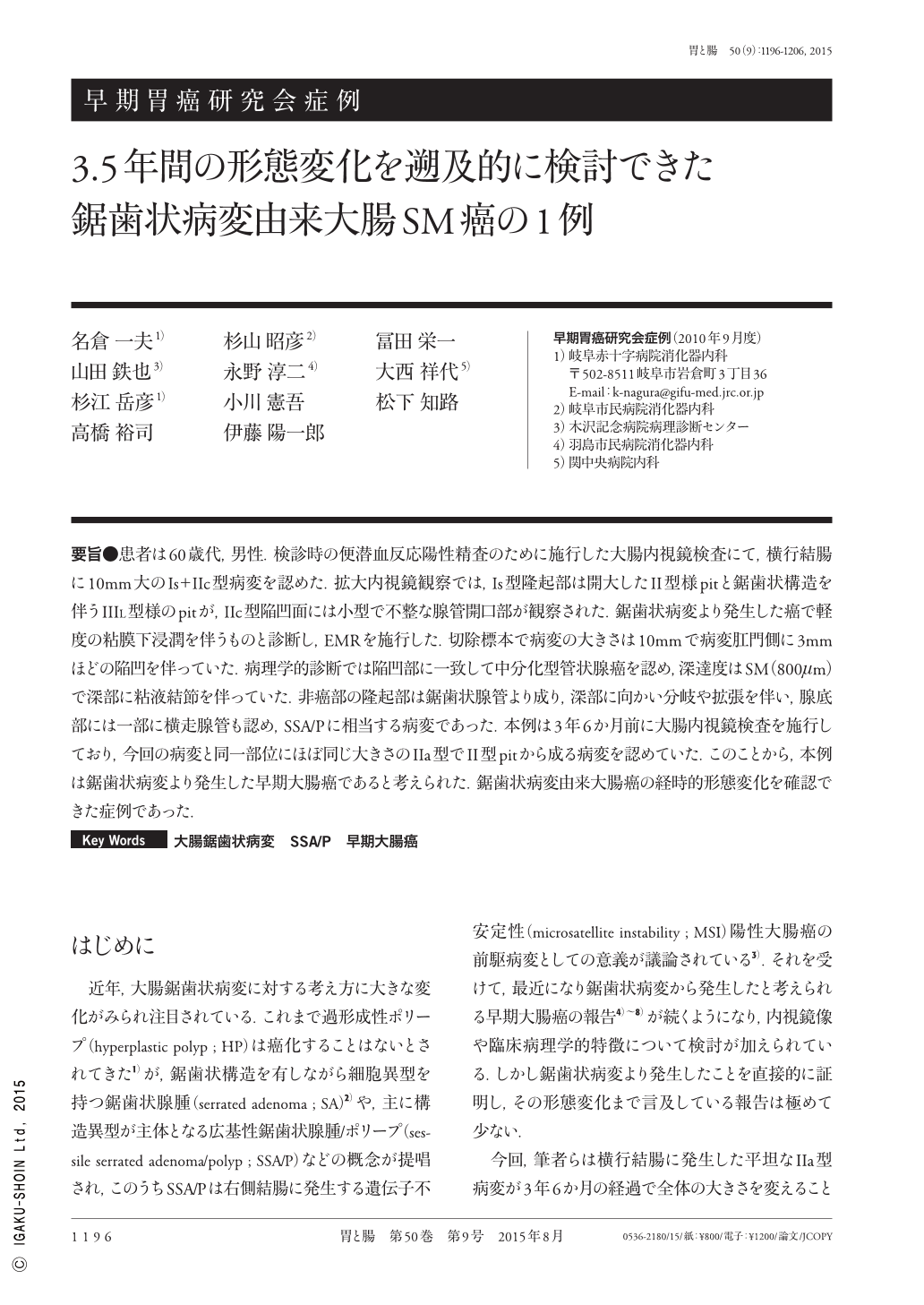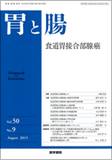Japanese
English
- 有料閲覧
- Abstract 文献概要
- 1ページ目 Look Inside
- 参考文献 Reference
要旨●患者は60歳代,男性.検診時の便潜血反応陽性精査のために施行した大腸内視鏡検査にて,横行結腸に10mm大のIs+IIc型病変を認めた.拡大内視鏡観察では,Is型隆起部は開大したII型様pitと鋸歯状構造を伴うIIIL型様のpitが,IIc型陥凹面には小型で不整な腺管開口部が観察された.鋸歯状病変より発生した癌で軽度の粘膜下浸潤を伴うものと診断し,EMRを施行した.切除標本で病変の大きさは10mmで病変肛門側に3mmほどの陥凹を伴っていた.病理学的診断では陥凹部に一致して中分化型管状腺癌を認め,深達度はSM(800μm)で深部に粘液結節を伴っていた.非癌部の隆起部は鋸歯状腺管より成り,深部に向かい分岐や拡張を伴い,腺底部には一部に横走腺管も認め,SSA/Pに相当する病変であった.本例は3年6か月前に大腸内視鏡検査を施行しており,今回の病変と同一部位にほぼ同じ大きさのIIa型でII型pitから成る病変を認めていた.このことから,本例は鋸歯状病変より発生した早期大腸癌であると考えられた.鋸歯状病変由来大腸癌の経時的形態変化を確認できた症例であった.
A male patient in his 60's exhibited a 10mm Type Is+IIc lesion in his transverse colon that was found by a colonoscopy performed after a positive fecal occult blood test. Type II and type IIIL pits with serrated structures were found in most of the type Is area, and a type II pit with a dilated crypt orifice was observed on the oral side of the lesion by magnifying colonoscopy. Small irregular pits were found in the depressive area, and we diagnosed the pit pattern as VI pits with high-grade irregularities. We considered the lesion to be a cancer of serrated lesion origin. Before treatment, we found no sign of deep submucosal invasion by endoscopic ultrasonography. Endoscopic mucosal resection was performed. The lesion was 10mm in the resected specimen, and a small depressive area was recognized in the lateral part of the lesion. A moderately differentiated tubular adenocarcinoma with submucosal invasion(800μm)was pathologically diagnosed, and a mucinous lake was recognized in the deeper region of the submucosal layer. Serrated ducts with branches and mild dilatation were found in the non-cancerous area, and those findings were equivalent to sessile serrated adenoma. We recognized a hyperplastic lesion that was type IIa with type II pits in the same location in the transverse colon as in the lesion that was observed by the colonoscopy performed 3.5 years ago. This lesion was diagnosed to be an early colorectal cancer of a sessile serrated adenoma origin. This case exhibited confirmed morphological changes over time to colon cancer that was derived from a serrated lesion.

Copyright © 2015, Igaku-Shoin Ltd. All rights reserved.


